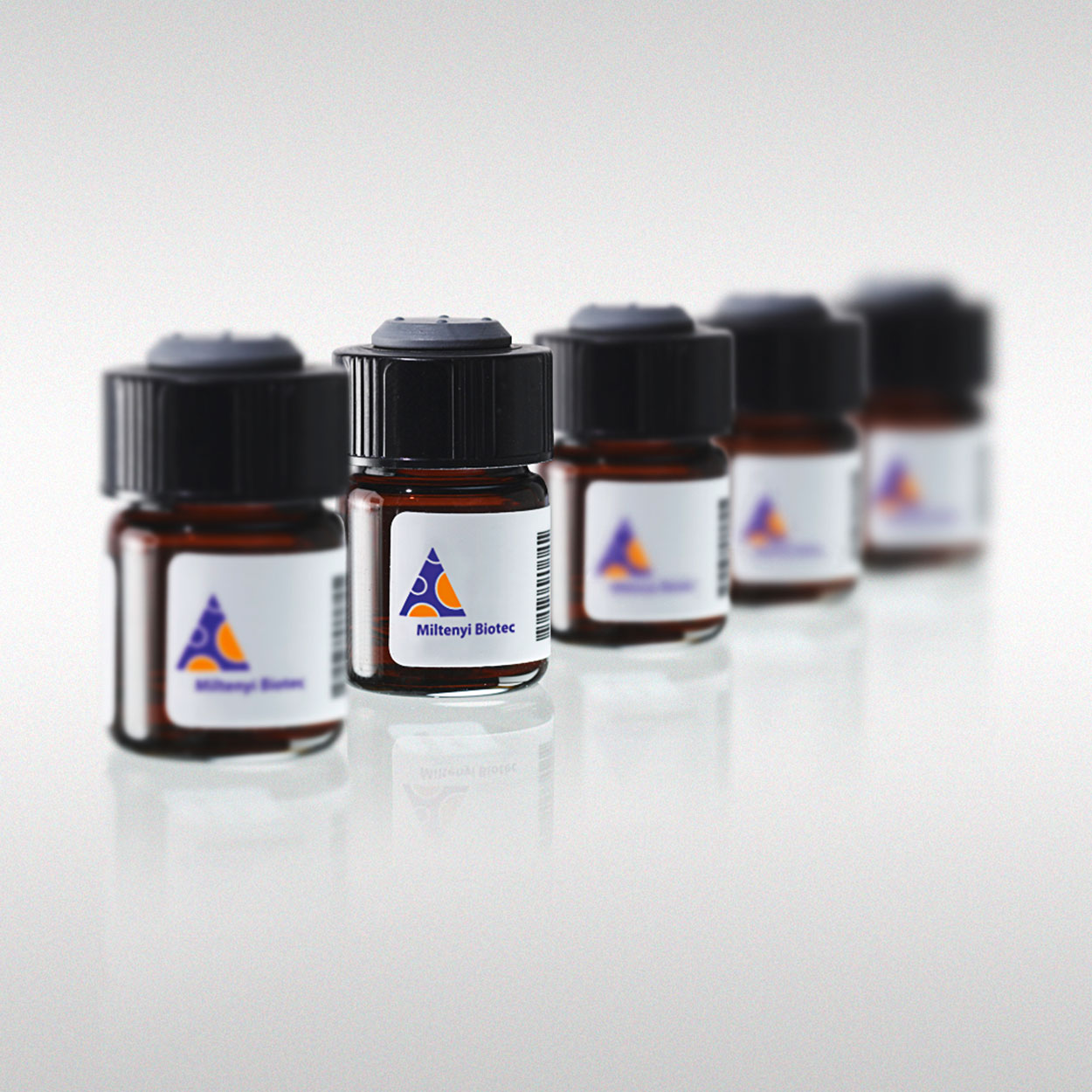Microbeads
CD8 MicroBeads, human
CD8 MicroBeads were developed for the positive selection or depletion of human cytotoxic CD8
T cells from different cell sources. The most commonly used cell sources are peripheral blood and cord blood. In addition, cytotoxic T cells have also been isolated from lymph nodes, thymus, skin biopsies
, and spleen.
Quantity
The CD8 antigen forms a complex together with the T cell receptor and acts as an accessory molecule in the recognition of MHC class I/peptide complexes by the TCR heterodimer on CD8
+
cytotoxic T cells. The CD8 molecule consists of either an α/β heterodimer or an α/α homodimer. It is expressed strongly on cytotoxic T cells and dimly on a subset of NK cells. CD8 is found on most thymocytes and on about one third of all peripheral blood T cells. CD8
+
cytotoxic T cells play an important role in the killing of virus-infected cells and tumor cells.
Downstream applications
Isolation or depletion of CD8
+
cytotoxic T cells is performed in many different research fields such as infectious diseases, autoimmune diseases, allergy, and asthma, as well as tumor immunology.
Cytotoxic T cells isolated by MACS® Technology remain viable and functional. Therefore, they can be used for further functional studies, such as proliferation assays
and cytotoxicity assays
, but also for the analysis of
in vitro
cytokine production
. CD8 MicroBeads have also been used for the depletion of CD8
+
T cells from human PBMCs for immune reconstitution experiments in SCID mice.
In combination with CD4 MultiSort MicroBeads, CD8 MicroBeads have been used for the isolation of CD4
+
CD8
+
double-positive thymocytes.
Other examples include various studies on viral infections, e.g.,
in vitro
infections of CD8
+
cells with HIV
, or monitoring of immune abnormalities in children of HIV-infected mothers
.
Columns
For positive selection: MS, LS, XS, or autoMACS
®
Columns. For depletion: LD, D, or autoMACS Columns.
